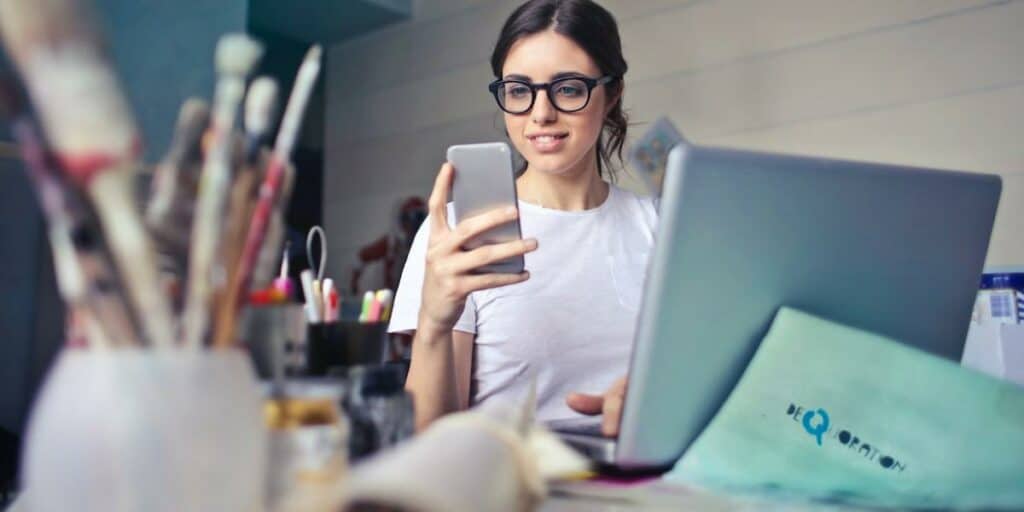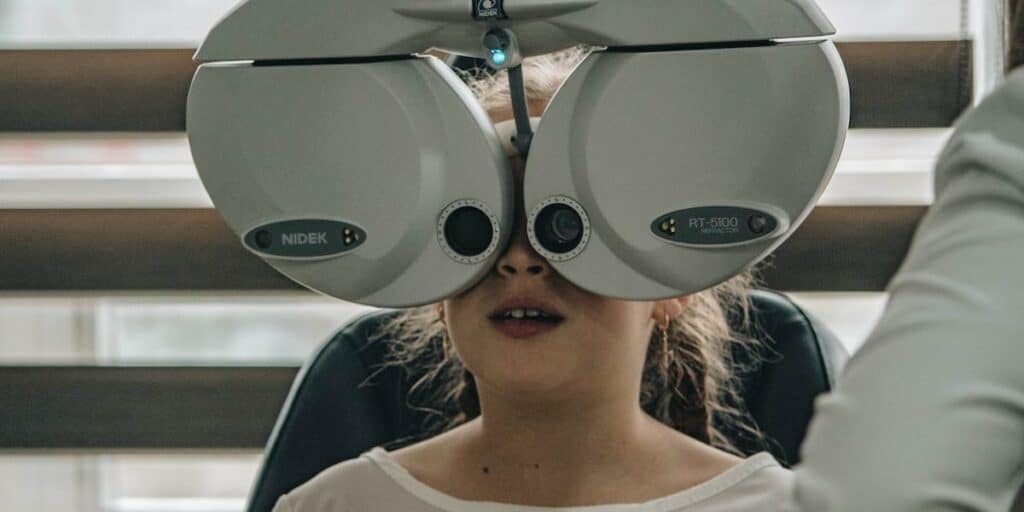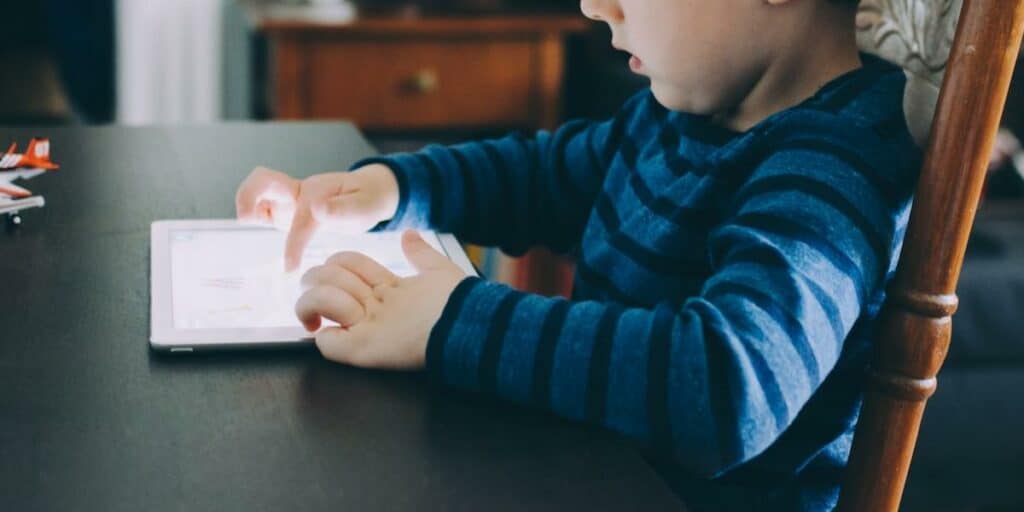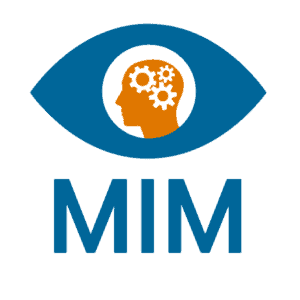
Do Screens Cause Nearsightedness? Myopia and Screen Time
Nearsightedness is an eye condition that can adversely affect your quality of life. It has been said that there is an increase in the prevalence of myopia as more people are using digital screens on their phones, tablets, and computers. Is there any truth to myopia and screen time?
What are the effects of myopia?

Myopia, or nearsightedness, is a vision condition in which objects close to you appear clear, but objects far away appear blurry. Myopia occurs when the eyeball is too long or when the cornea (the clear front cover of the eye) has too much curvature. As a result, the light that enters your eye isn’t focused correctly and images appear blurry.
The Global Increase In Myopia and Screen Time

The prevalence of myopia has increased dramatically over the past few decades. In fact, studies have shown that myopia has doubled in the last 50 years. In the United States alone, myopia has increased from 25 percent in 1971-1972 to 41.6 percent in 1999-2004.
Can Too Much Screen Time Impact Children’s Health and Vision?
There are a number of factors that are thought to contribute to the global increase in myopia. These include:
• Increased use of technology: The increased use of computers, tablets and smartphones is thought to play a role in the development of myopia as it requires children to focus their eyes at close range for extended periods of time. This can lead to changes in the eyeball’s shape and result in myopia.
• Less time outdoors: Children are spending less time outdoors than they did in previous generations. This lack of exposure to natural light is also thought to contribute to an increase in myopia, as it reduces opportunities for children’s eyes to focus in proper lighting on distant objects.
Why Does Too Much Screen Use Make Your Eyes Tired?
If you spend too much time keeping your eyes glued to one spot on a screen at one distance. Your eyes can become stuck, tense, and get tired. When your eyes make the same repetitive motions over and over again, the muscles in the eyes become overworked. When a muscle becomes overworked it, will eventually stop working! Think about going to the gym and running on a treadmill until you can’t run anymore. After you fall over from exhaustion it’s impossible to pick yourself up and start moving again! The eyes are no different
Is Blue Light Actually Bad For Your Eye Health?
Blue light is a type of light that is emitted from screens, such as computers, phones, and TVs. This light has a shorter wavelength than other colors of light, and it is thought to be more harmful to the eyes. However, blue light is all around us. The sun in the evening hours emits 100,000 times more blue light than your screen! There are plenty of people that are outside and active during this time, but don’t have vision problems. Yet, we like to blame blue light and screens for our eye issues. Blue isn’t so much the issue but rather the amount of time fixated and focused on one point.
How Can You Protect Your Eyes From Screens?

Take breaks often when using screens. There are two ways you can do this.
- Close your eyes for a while so they can rest.
- Move around (go for a walk) and look at objects in the distance.
You may have heard of the twenty-twenty-twenty rule. Take breaks every 20 minutes and look at something 20 feet away for 20 seconds. This will help the muscles in your eyes to move so they don’t become stuck at a fixed position.
Match the lighting of screen to your environment.
Many people often look at bright screens in dark environments. To keep eyes working so they don’t get fatigued, you should match your surrounding lighting to the brightness of the screen.
What about dark mode?
While dark mode can decrease the brightness of your screen, if your surroundings are dark, then the sensors that process peripheral information won’t function as well as they could. Seeing objects in your surroundings or peripheral let your brain know where you are in space.
Adjust position of your screen to reduce eye strain
Adjusting your screen’s position can help reduce eyestrain. When you are using a phone or computer, make sure your screen is positioned squarely and centered in front of you. You should also sit in a chair straight up without slouching. This will help with your neck and back posture. This is important because posture can affect vision!
How is myopia treated?
The most common treatment for myopia is glasses or contact lenses. These correct the refractive error and allow the eye to focus light properly on the retina.
Other treatment options include:
• Refractive surgery: This involves correcting the shape of the cornea so that it focuses light properly on the retina. There are several types of refractive surgery, including LASIK, PRK, and LASEK.
• Orthokeratology: This involves wearing special contact lenses that temporarily reshape the cornea so that it focuses light properly on the retina. The lenses must be worn overnight and removed during the day.
Treat Nearsighted Vision Naturally
There is no question that screens can contribute to nearsightedness. The American Academy of Pediatrics even recommends that children have their eyes checked for myopia if they spend more than two hours a day on screens.
But the real question is, can myopia vision be cured? And the answer is yes!
Many people aren’t aware of this, but you can actually treat and improve your nearsightedness by reteaching your brain to control the movements of the muscles in your eyes and learning how to keep your body relaxed. Wouldn’t it be outstanding to go to your optometrist and they give you a lower prescription instead of a higher one?
Learn More About Improving Your Eyesight Naturally
If you want to learn to improve your vision naturally, you can start here with my ebook: 5 Techniques To Prove Your Eyesight Can Get Better


Thank you, Mark!